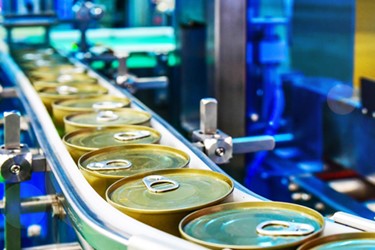How Food And Beverage Companies Can Get Ahead Of The Water Scarcity Curve

By Joe Cogliano

High-quality water is critical to food and beverage production — both as an ingredient and a process enabler — so the sourcing challenges faced by municipal water systems pose an ongoing threat to the health of the industry.
Mandatory conservation measures, for example, are forcing several Western states to take less water from the Colorado River for the first time to preserve minimum levels in Lake Mead and much of California continues to be susceptible to long-term drought issues. Meanwhile, newer reports indicate that shortages will occur in nearly half of watersheds across the country over the next half-century.
While water suppliers struggle for answers, the reality is that food and beverage companies are increasingly prone to water insecurity that can translate into scarcity and higher prices. One strategy to mitigate the risk is to move to where the water is — either by expanding so operations are in multiple regions or by completely relocating to areas of the country that are flush with water. However, this isn’t realistic for many food and beverage businesses, so advanced technology will likely play an outsized role in long-term water security.
Fortunately, there are a variety of technology options now available to improve resilience.
Reuse More Feasible Than Ever
For companies that discharge a significant volume of wastewater, implanting a reuse scheme can immediately reduce dependency on municipal water systems for clean water.
Reuse often requires connecting multiple high-tech systems to reach the necessary level of purification. The key is developing a process flow diagram, also known as a flowsheet, to link the proper core technologies to address each plant’s specific situation.
In many cases, UV ends up being part of the equation. Using one of several types of lamps, UV systems expose water to ultraviolet light for a matter of seconds to achieve disinfection. It is a simple and effective way to neutralize harmful pathogens while acting as an environmentally friendly alternative to chemicals.
UV also has other benefits.
An increasing number of dairy producers, for instance, are implementing UV in place of heat pasteurization to comply with regulations for processing Grade-A milk for interstate shipment. Dairy plants are required to pasteurize water that will contact the same surfaces as the milk, and UV disinfection has been added as an approved method within the last decade.
Ultrafiltration, or UF, is another proven technology that can fit well in a reuse flowsheet. UF forces water through a semi-permeable membrane to remove contaminants. Within UF systems, the strength of hollow-fiber membranes is critical to both optimal performance and the lowest possible long-term O&M costs. Recent advancements in manufacturing have produced more durable membranes that accomplish the task at a lower cost based on the total lifecycle.
Other technologies that can be incorporated in a reuse plan include:
- Reverse osmosis — A membrane technology similar to UF but with much smaller pores. It removes dissolved solids, where UF does not, and is typically used as a polishing step.
- Advanced oxidation — Centers around the creation of the powerful hydroxyl radical. Three oxidants are very effective: ozone, hydrogen peroxide, and ultraviolet light. They are used in various combinations with one another — although ozone can also be used by itself — to produce the hydroxyl radical molecule.
- Activated carbon — Used to adsorb natural organic compounds, taste-and-odor compounds, and synthetic organic chemicals. Effective because it is a highly porous material and provides a large surface area to which contaminants may adsorb. The two main types are granular activated carbon (GAC) and powdered activated carbon (PAC).
A thorough evaluation of each food and beverage operation is necessary to determine which combination of technologies are both viable and cost-effective to meet long-term demands. Most technology providers can offer experts to assist in this task.
Optimizing Water Usage
Stretching water supplies is another tool for boosting resilience.
The interconnectivity of equipment, sensors, and instrumentation — also known as the Industrial Internet of Things, or IIoT — offers businesses a way to increase their competitiveness by optimizing nearly every step of each process, including the use of water in products and processes.
IIoT provides the edge by facilitating the collection of critical data, then channeling it into a platform that assists with bolstering process decisions. While the same types of information were gathered and analyzed long before IIoT, advanced technology now allows data to be pulled from multiple sources and examined rapidly and in its entirety. The result is deep insights in real time.
Additionally, IIoT supports the ability to operate efficiently in multiple locations, which provides a hedge against water scarcity.
